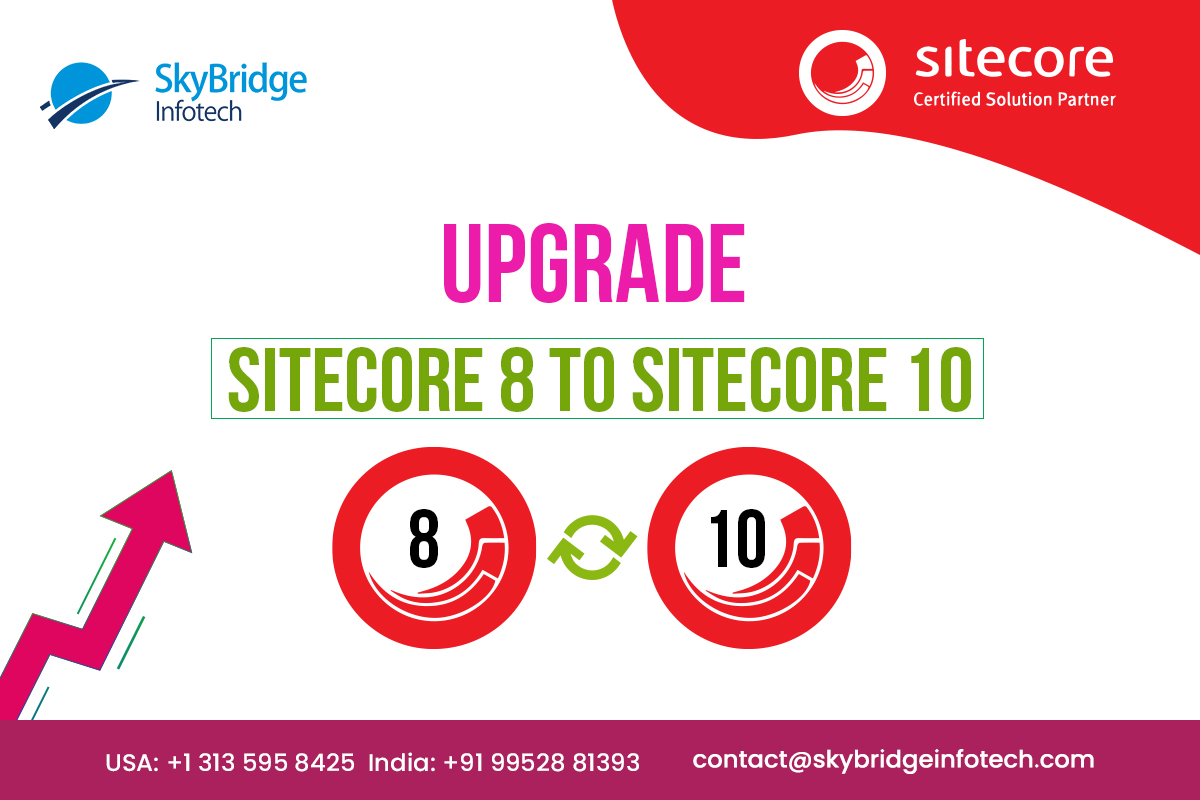Upgrade Sitecore 8 to Sitecore 10
Upgrading Steps:
Create the Sitecore Packages:
Before start, to upgrade we have to take packages from Sitecore 8 web applications.
Create separate packages for the below items.
- Packages for Templates
Packages for Layouts
Packages for Renderings
Packages for Media Library
Packages for Dictionary and Content
Sitecore 10 Installation
Install the Sitecore 10 instance using the required steps. We have different steps for installation when we planning to host in an Azure environment.
Backup from Sitecore 10
Once Sitecore items are installed in 10 then we need to take back of Master DB and
Website folder of Sitecore 10 instance.
Install the Sitecore packages
Install the created packages (Templates, Layouts, Renderings, Media items, Dictionary items) from Sitecore 8 into Sitecore 10.
Back up of Visual Studio solution and physical files changes
Take a backup of the Visual Studio solution of Sitecore 8.
We have to remove the references like physical files or NuGet packages of Sitecore.Kernal, Sitecore.Mvc , and other dlls are used.
Change the visual studio target framework of the project from 4.6.2 to 4.8 in the properties window.
We have to add the required versions of Sitecore.Kernal, Sitecore.MVC any other references for supported in Sitecore 10 version.
We have to add the supported NuGet packages and references for Sitecore 10.
Once we completed all the changes then build the whole solution. In Visual Studio, the solution adds the publish folder as newly created Sitecore 10 instance and website folder.
Common Changes for Upgrade
1) Changes in Core DB.
2) Custom config file changes for Sitecore 10.
3) Default config file changes.
4) Custom core collections created in Search.
5) Third-party integrations.
6) Manually update any stored endpoints from Sitecore.
Disable Sitecore Services:
Before upgrading to Sitecore 10 must disable Sitecore active services.
1. Delete all the *.JavaScriptServices.* files from the bin and App_config folders and any child folders.
2. In the App_Config\Sitecore\LayoutService\ folder, delete the Sitecore.LayoutService.Jss.config file.
3. In the App_Config\Sitecore\Services.GraphQL\ folder, delete the zSitecore.JavaScriptServices.GraphQL.config file.
Restore Analytics Items:
If you are using the Sitecore Experience Database (xDB) functionality – the Xdb.enabled setting is set to true, and xDB is enabled in your license file – before you install the upgrade package, you must restore any of the standard marketing taxonomies and marketing definitions that you have deleted from your Sitecore installation.
When the upgrade is completed, you can delete these unwanted marketing taxonomies and marketing definitions again
Before Restore:
1. Unpack the MarketingDefinitionsUpgrade.zip file.
2. Copy the following pages to the \sitecore\admin folder of your website:
RestoreDeletedMarketingTaxonomies.aspx, RestoreDeletedMarketingDefinitions.aspx
Remove the Xdb.MarketingAutomation connection string
In Sitecore XP 10.0.0, the xdb.marketingautomation connection string has been removed and is no longer required on CM instances. Delete the xdb.marketingautomation connection below string,
<add name=”xdb.marketingautomation” connectionString=”user id=user;password=password;Data
Source=(server);Database=Sitecore.MarketingAutomation” />
Install Sitecore Identity Server
Download the below files from the Sitecore Identity download site.
1) Sitecore.IdentityServer.5.0.0-r00277.scwdp.zip
2) IdentityServer Deployment Configuration 5.0.0.zip
Create a new folder in c drive (Example: c:\resourcefiles) and copy both ZIP files to the folder.
This folder should contain the below items,
1) createcert.json
2) IdentityServer.json
3) Install-IdentityServer.ps1
4) IdentityServer Deployment Configuration 5.0.0.zip
5) Sitecore.IdentityServer.5.0.0-r00277.scwdp.zip
Save Sitecore license file in c drive folder (Example: c:\resourcefiles) as license.xml
Edit the Install-IdentityServer.ps1 file, and add required parameters and save your changes.
Open Powershell as an admin mode and go to the c drive folder and run the below command.
.\Install-IdentityServer.ps1
The PasswordRecoveryUrl and the AllowedCorsOriginsGroup1 settings should point to a valid URL for a Sitecore instance:
<PasswordRecoveryUrl>http://sitecore_instance/sitecore/login?rc=1</PasswordRecoveryUrl>
<AllowedCorsOriginsGroup1>http://sitecore_instance</AllowedCorsOriginsGroup1>
Upgrade Sitecore 8 to Sitecore 10 | Sitecore Upgrade Services
Author: Kiruthika Sakthivel, Sitecore Specialist.

